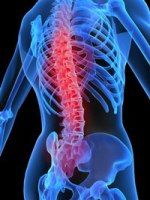Plug and play bone repair
A modified ink-jet printer can be used to directly print layer upon layer of artificial bone for quick-fix grafts used in reconstructive surgery
Advertisement
Bone takes a long time to grow and repair, so treating serious damage or carrying out reconstructive procedures can be a slow and painstaking process. Jake Barralet of the Faculty of dentistry, at McGill University and Uwe Gbureck, Department for Functional Materials in medicine and Dentistry, University of Würzburg and their team describe a method for "printing" artificial bone from the same chemical components as living bone and including biomolecules that trigger blood vessel growth to bring the bone to life after it is implanted in the body.
The process could be much more effective and less risky than removing sections of bone from elsewhere in the body for grafting on to an injured site.
The McGill - Würzburg team has demonstrated how an artificial bone can be constructed using the minerals brushite and hydroxyapatite instead of conventional "ink" in their printer. By printing one layer on top of another they can build up a highly porous 3D bioceramic material resembling bone at room temperature.
The team also adds natural chemicals to stimulate blood vessel growth - vascular endothelial growth factor (VEGF) or copper sulphate. This allows them to incorporate into their model bone implants the necessary materials for stimulating blood vessel growth and allowing the artificial bone grafts to "grow" into the site being repaired.
Tissue growth, explain the researchers, is guided by a whole range of cellular signaling molecules that ebb and flow over time, switching on and off yet more molecules that trigger growth, and crucially, growth of blood vessels into a tissue. By incorporating the blood vessel growth factors into their artificial bone implants, Barralet and colleagues hope that their approach will allow acceleration of integration of such implants into a graft site. "This low-temperature direct approach offers several practical advantages and may find application in bone grafting," the researchers say.
The team has so far tested blood vessel growth into the implant materials made with and without VEGF. They found that blood vessels can grow only one or two millimetres into the pores of VEGF-free artificial bone. In contrast, the artificial bone made with added VEGF promotes blood vessels growth throughout its network of pores. Such a demonstration bodes well for the further development of bespoke printable bone grafts.
Original publication: Jake Barralet et al.; "Direct Printing of Bioceramic Implants with Spatially Localized Angiogenic Factors"; Advanced Materials 2007, 19, No. 6.























































